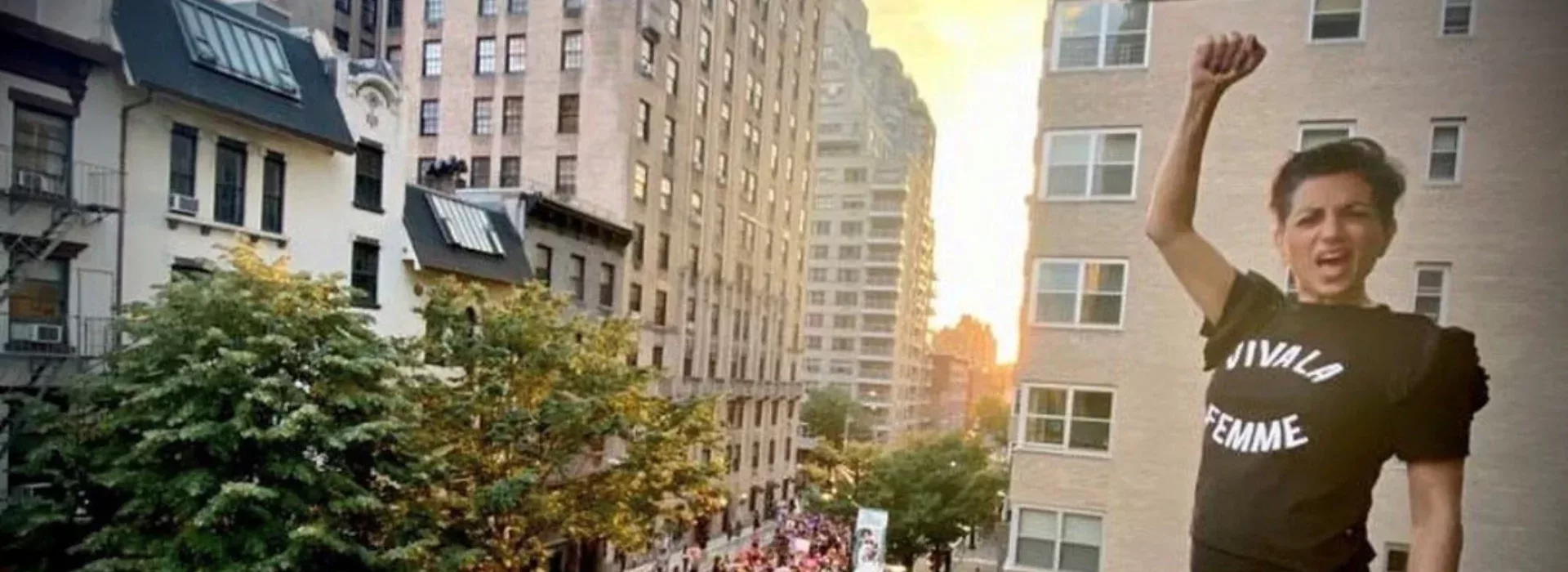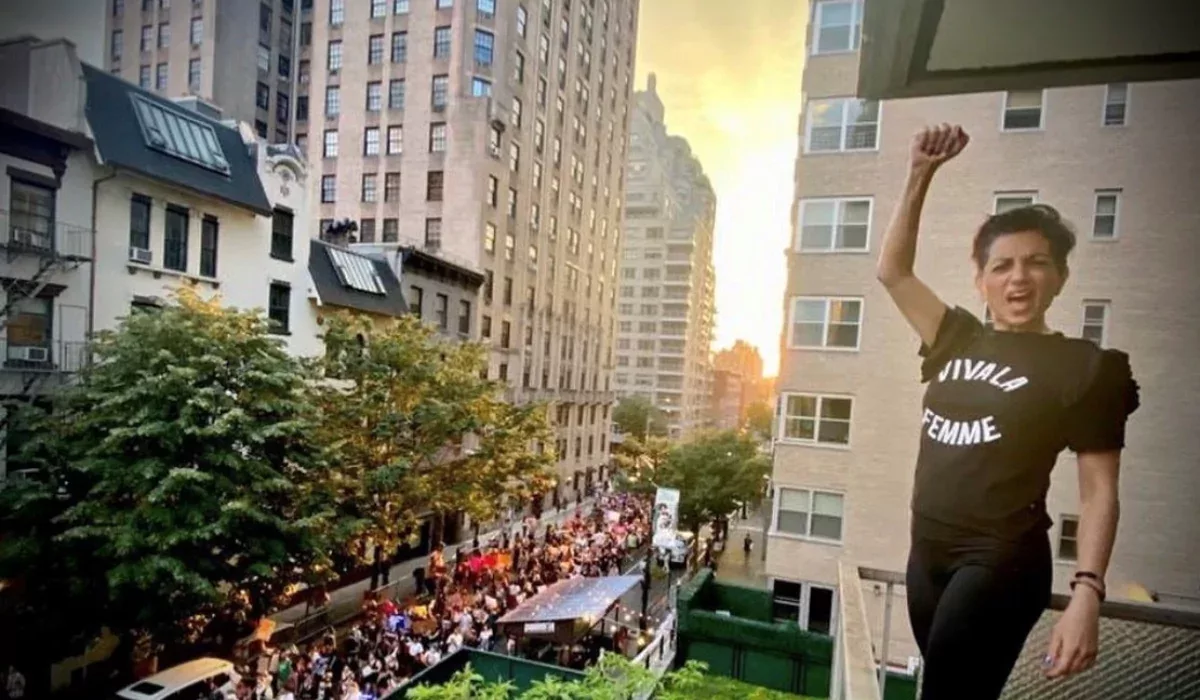
What I’m Struggling With: The Never-Ending Fight For Gender Equality
Trigger warning: gender-based violence
I was only 14 when I walked into the course that would change my life. I was an awkward, immigrant brown girl you’d hardly notice in a liberal all-girls high school full of people who didn’t look like me. Who knows why I signed up for that class, but Comparative Women’s History caught my attention. And 34 years later, it still hasn’t let me go.
I took a seat at the back, close to the door. In that classroom, this little brown girl learned that women’s history — her history — was one of violence. There, she learned how one binds a foot, the now-outdated Chinese practice of breaking and remaking the feet of young girls in order to keep them small — or permanently disfigured.
“I’ve built my entire existence around my anger and desire to eradicate violence against women.”
There, she saw (trigger warning) the video footage of a young girl being held down while her genitals were cut by a barber in Egypt. The practice of female genital mutilation (FGM) persists today and has affected over 200 million girls and women across 30 countries, mostly in Africa, the Middle East, and Asia. What’s worse, lockdown measures due to COVID presented opportunities to carry out FGM “undetected,” meaning an additional 2 million girls are estimated to have been affected.
Before the age of 14, I already knew that the world sees women and girls as unequal, as less-than. However, I didn’t know that the world often seeks to actively destroy women and girls. Fast forward a few decades, and I’ve built my entire existence around my anger and desire to eradicate violence against women.
I’m not doing a very good job, it seems.
As International Women’s Day approaches on the 8th of March, people around the world celebrate women’s social, cultural, economic, and political achievements throughout history. We discuss how we can nudge closer to gender equality. How we, as societies, can do better for women and girls. This day is significant. However, it isn’t enough to talk, to acknowledge, or even to write…
We have to act. To effect change.
On paper, we’ve got all the language in place — or so we think. We have the advocacy days, the campaigns, and the slogans. The Universal Declaration of Human Rights was written in 1948. That document defined what we are as humans, and what we are all entitled to — yes, all of us — in principle.
“What do “human rights” mean, when women’s rights continue to be denied?”
But 74 years later, it’s worth asking: What has changed? What do “human rights” mean, when women’s rights continue to be denied? Catharine MacKinnon, American radical feminist legal scholar, activist, and author, asks: “Are women human yet?”
In examining the declaration, she questions the “spirit of brotherhood” and asks if this spirit also includes us. What if the document said “spirit of sisterhood”?! She goes on to critique the “spirit” of the articles in the declaration, asking where women are.
Articles in favor of “just pay” and participation in government still fail to include women. Women are not paid the same as men. Women are more often relegated to the informal sector. Women’s work still does not count as work. And most countries are still run by men, with women being the exception: the first, the “woman leader.” An anomaly. Not the norm.
MacKinnon puts it clearly:
“If we measure the reality of women’s situation in all its variety against the guarantees of the Universal Declaration, not only do women not have the rights it guarantees, but it is hard to see, in its vision of humanity, a woman’s face. Women need full human status in social reality. When will women be human? When?”
And here we are, over 74 years later. Another International Women’s Day. Another year of screaming. Another year of violence against women that shows no signs of abating.
We can’t talk about women’s rights only for one day of the year. We must be constantly asking: Why does violence against women happen? Why do gender gaps and inequalities continue? Why can’t we do better?!
Meanwhile, American feminist activist and writer, Sonia Johnson, reminds us that the term “war between the sexes” is fundamentally misguided. In fact, it is dangerous. This is not a case of “natural enmity” where both sides are evenly matched. This “war” is not “between” anyone. Firstly, it is man-made. And — alarmingly — it is deliberately made against women.
“Patriarchy divides the world in half, with women on the bottom half.”
We speak of gender as a binary. However, radical feminist writer, Lierre Keith, reminds us that it is more of a hierarchy that’s sadistic in practice and it is murderous in conclusion—not unlike race and class. Patriarchy divides the world in half, with women on the bottom half.
What will it take for women to matter? And not just when they are the wife, sister, or daughter of some man. Rather, as humans in their own right. Legendary feminist activist and academic Cynthia Enloe puts it clearly:
“It’s tempting to believe that women matter only because they are somebody’s wife, somebody’s daughter, somebody’s free or cheapened labour, somebody’s unpaid caretaker, somebody’s reproducer, somebody’s emotional attachment, somebody’s source of honour or shame, somebody’s patriotic symbol. At the very core of feminism is the conviction that women matter for their own sakes.”
She asks: “What does it mean, to take women seriously?”
But whose responsibility is this struggle? As someone who has worked on women’s rights for over 30 years, I ask myself why it seems to only be women who are charged with fixing a problem they did not actually cause in the first place. Men, where are you?!
My friend and fellow feminist fighter Heather Cole puts it powerfully:
“We hear a lot of hand-wringing from men about how awful violence against women is, and we so rarely have men standing alongside us in our hardest fights. Metaphorically, we are still being left to be killed. We’re having this fight with or without you. We are not interested in your hand wringing. We are interested in you risking as much as we do, every day, to make this stop. Either move with purpose or get out of our fucking way.”
I look at myself in the mirror and I see that girl, that 14-year-old, sitting in that classroom, filled with sadness and rage.
I have not fulfilled my promise to her. But I’m not done trying yet.
“What might we have done in our lives if we hadn’t needed to spend them trying to end men’s violence?”
The last time I saw my friend Heather Cole, she asked me this: “What might we have done in our lives if we hadn’t needed to spend them trying to end men’s violence?” I don’t know. I don’t know what I could have become without this. This, to me, is everything that is important and urgent in the world.
But I owe it to that 14-year-old girl — and every girl — to survive until my part is finished.
